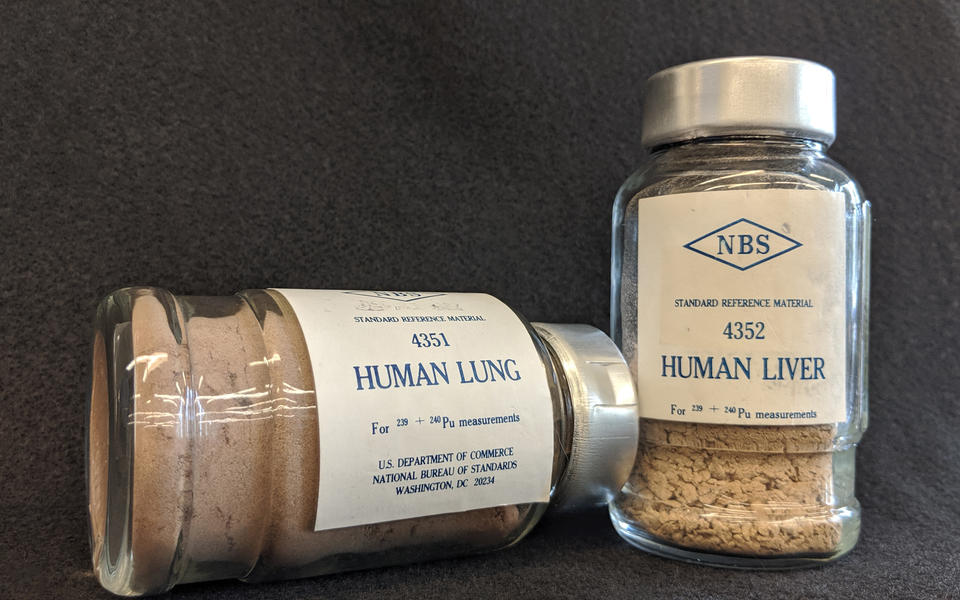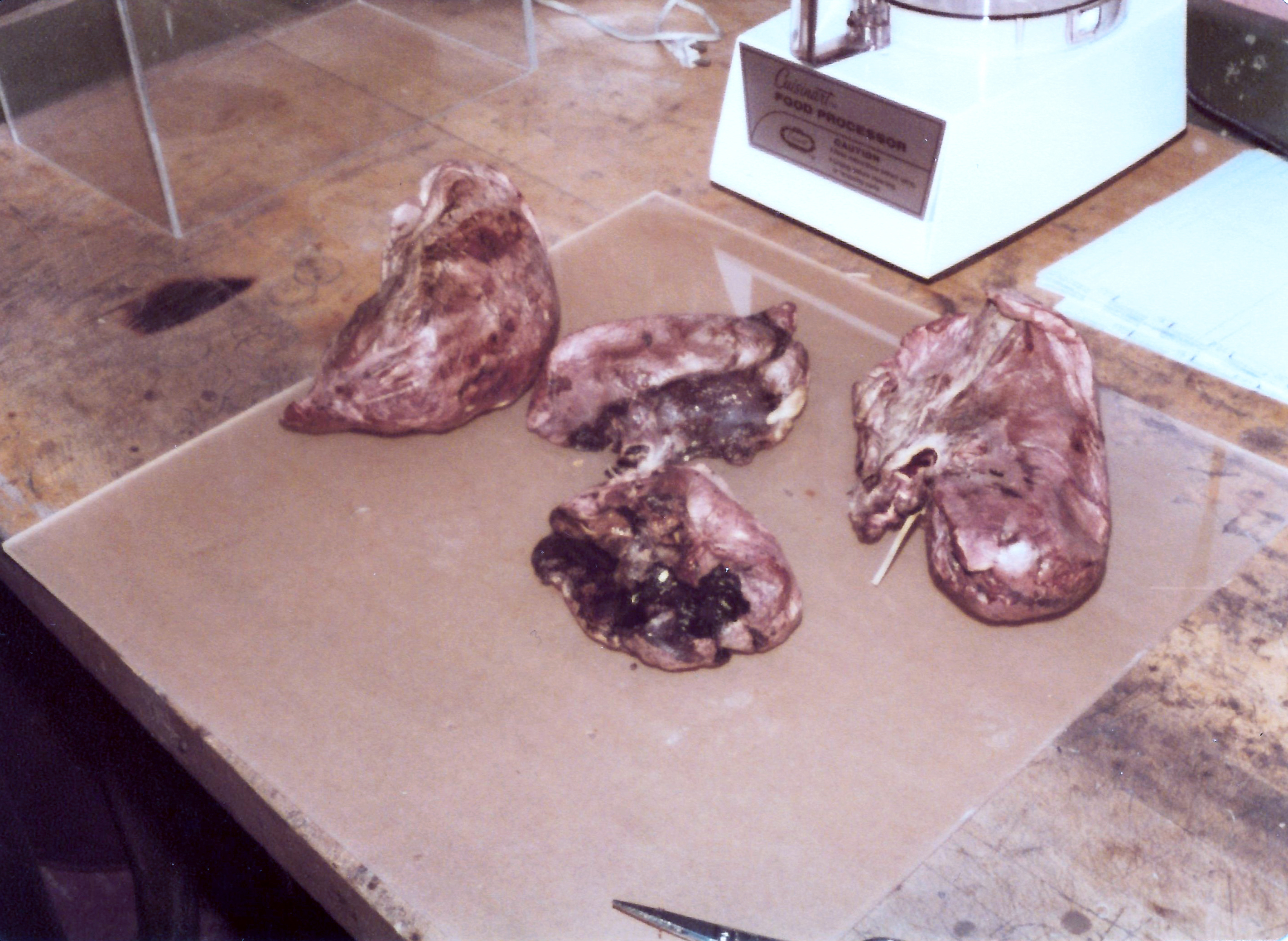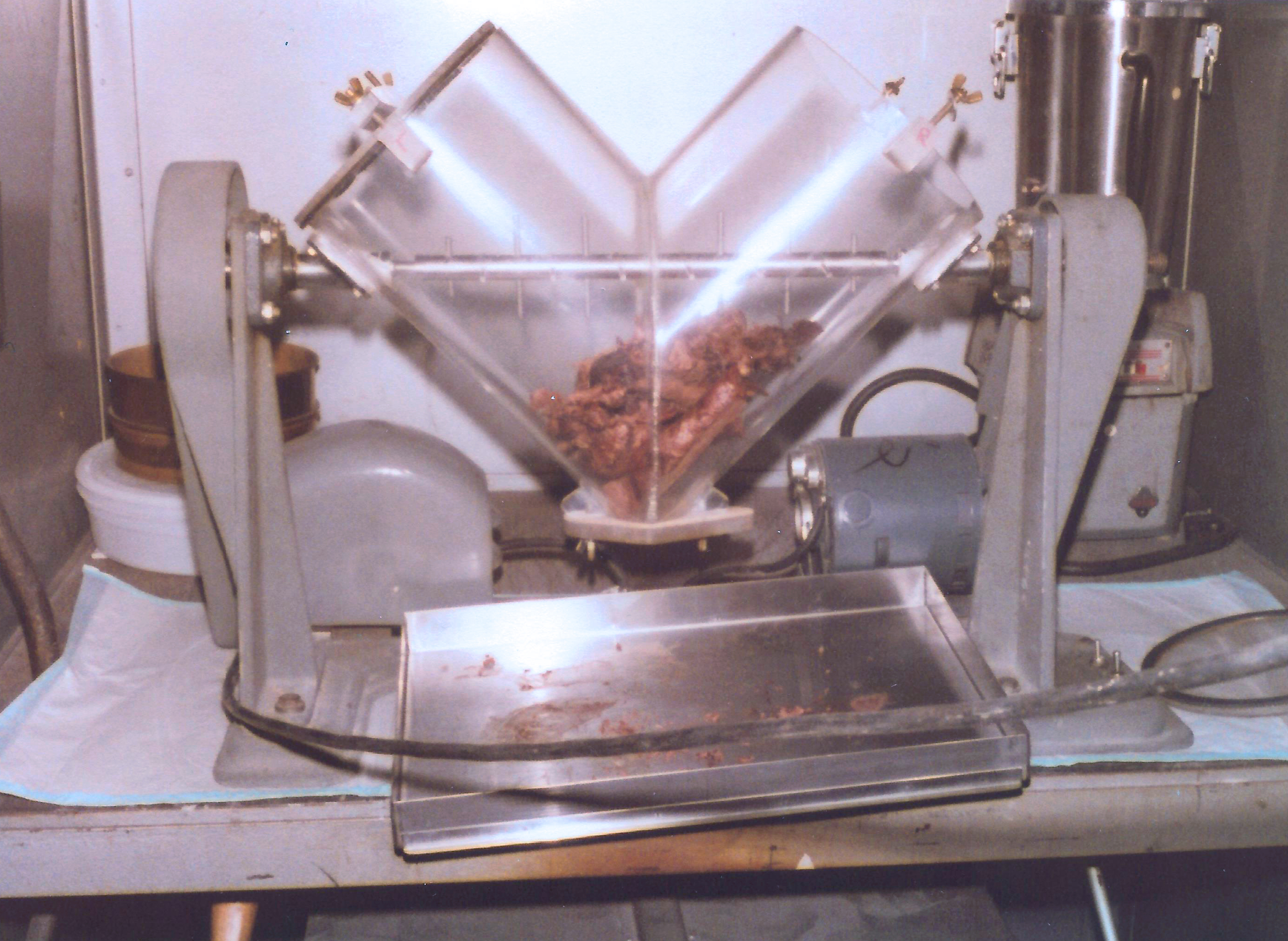Taking Measure
Just a Standard Blog

SRMs 4351 and 4352.
It was 1978, and the United States was embroiled in a Cold War. Nuclear weapons were being produced and numerous countries were carrying out atmospheric nuclear tests. Nuclear power plants were also being built and fueled. As an unintended result, people were sometimes contaminated and injured when working with radioactive materials or otherwise exposed to radioactivity. Doctors had to evaluate the extent of the contamination and predict how it would affect individuals so that they could give them proper care. Helping doctors and scientists measure and understand the effects of radiation in human tissue is where I come into this story.
Two major organizations — the National Council on Radiation Protection and Measurements (NCRP) and the International Commission on Radiological Protection (ICRP) — had models that predicted which organs in the human body would be most affected by exposure to radioactivity. The models considered how radionuclides — radioactive atoms — move around the body and estimated how long they stay in the body. In addition, the U.S. Department of Energy sponsored a voluntary registry of people who had been contaminated by radioactivity. The radioactivity levels of these volunteers were measured throughout their lifetimes to help improve and refine those models.
Many of the participants also volunteered to donate their bodies after death to be analyzed in detail to further develop and validate the models. According to those models, the lungs, liver and bone were among the tissues most affected by radionuclides, and so accurate measurements of the radioactive exposure to these tissues were of high priority.
About the time that the need for lung, liver and bone radioactivity measurements was being recognized, I had just finished getting my degree in environmental radiochemistry and was looking for a job. Luckily, I was hired to work in the radioactivity group of the National Bureau of Standards (NBS, now the National Institute of Standards and Technology or NIST). The job they hired me to do was to develop and certify large quantities of a new line of standard reference materials (SRMs) of radioactive samples of these tissues. SRMs are materials that have been extensively measured in multiple ways so that the amount of a certain constituent or constituents is known with a high level of confidence. For this project, we needed large quantities of radioactive lung, liver and bone tissue, more than a 10-year supply, because the SRMs would be used for long-term national and international environmental programs.
The lung and liver were the first human tissue types we addressed.
Making Years' Worth of Radioactive SRMs
To meet the demand for a long-term supply, we figured we would need 1,000 units of SRMs of about 50 grams of dry material each and containing 0.001 becquerel per gram. (A becquerel is a measure of radioactivity equal to the decay of one radioactive atomic nucleus per second.) We all have low levels of contamination within our tissues because of the global fallout from decades of nuclear tests. However, the radioactivity in the SRMs is much more highly concentrated than it is in organs that have been contaminated only by this global fallout. We decided that the only practical system for achieving this high concentration was to “spike” a large volume of each tissue type with a radioactively contaminated smaller volume of the corresponding tissue. To get the right ratio, we would need to collect 200-250 kilograms of tissue from the general population to dilute the radioactive organ tissue. This is approximately 400 individual whole human lungs and more than 150 human livers.
Collecting and Processing Human Lungs and Livers
We obtained the contaminated organs from the Transuranium Registry Program at Los Alamos National Laboratory in Los Alamos, New Mexico, the birthplace of the atomic bomb. The organs came from two occupationally exposed people who had signed releases stating that their organs and exposure information could be used for research after their deaths. Both were killed in automobile accidents. One, a 50-year-old male, received all his plutonium exposure in less than a year, at the age of about 20. The other, also male, apparently had chronic occupational exposure to plutonium for the 25 years prior to his death at age 46. The plutonium concentrations in their livers and the lungs were more than 1,000 times higher than the general population.
We collected the human lungs and livers that we used to dilute the radioactive specimens from medical institutes in the Baltimore, Maryland, and Washington, D.C., metropolitan areas. I must admit, the first time we entered the autopsy room it was difficult to keep lunch down. We stored the organs in large freezers until we had amassed enough to dilute the SRMs — approximately 200 kg of liver and 70 kg of lung material. Even though the total lung sample was only about one-third of that originally planned, the difficulty and slowness of accumulating these organs persuaded us to proceed with the processing while recognizing some sacrifice in the number of final samples.
Despite the sterilization process that ensured safe handling, it was more than unsettling to occasionally have bits of tissue sprayed onto the laboratory walls and us during the grinding stage, necessitating at least one necktie and lab coat change. At one point, we even had a red ooze with bits of tissue floating in it making its way down the hall. We appreciated the uncomplaining custodian who helped us clean up.


Once we had finished freeze-drying, blending, pulverizing and bottling the SRMs, it was time to analyze them to see if we had gotten it right.
Since this was our first effort to produce and certify radioactive human lung and liver SRMs, we needed to generate the data with the cooperation of expert national and international laboratories with many years of radioanalytical experience. It was an honor to work with the great radioanalytical chemists from these distinguished laboratories, particularly because they placed the reputations of their laboratories on public display and steadfastly stood behind the quality of their work.
Certifying the Final Results
The results from the laboratories were then critically evaluated by collaborating with NIST’s statisticians.
According to the final analysis, the human liver SRM, SRM 4352, we created contains two forms or isotopes of plutonium and is certified to release 2.06 becquerels of radiation per kilogram of dry tissue, plus or minus 19%, with a 95% level of statistical confidence at the date the SRM was certified.
Similarly, the human lung SRM, SRM 4351, contains two isotopes of plutonium and is certified to release 1.29 becquerels of radiation per kilogram of dry tissue, plus 66% to minus 19%, with a 95% level of statistical confidence at the date the SRM was certified.
Although the uncertainty for SRM 4351 is large, the effort resulted in a unique material and an effort to improve it will probably not be attempted for the foreseeable future due to logistical and budgetary reasons.
After all this effort, my final act was to place my hand over my heart and say to myself that I believed in the certified values from what we had done.
Once the SRMs were measured and certified, they were packaged and made available for sale. They were primarily used as quality control materials to determine the accuracy of the measurements of plutonium and other radionuclides in contaminated lungs and livers. For instance, when there is a radioactive contamination event like an accident at a U.S. nuclear weapons legacy cleanup site or incidents like Chernobyl or Fukushima, victims are screened to see what and how many radionuclides are passing through their bodies. The resulting data is then put through the NCRP and ICRP models to determine the location and content of radioactivity in the body. Doctors can then use those models to determine the short- and long-term radiation exposure and develop a therapeutic response.
Conclusions
Although these SRMs may have been a once-in-a-lifetime effort to meet past and current needs, there will be future needs for new SRMs of this sort for applications dealing with nuclear power plant construction, as well as decommissioning and decontamination, spent fuel processing, nuclear forensics, nuclear and industrial accidents, and potentially nuclear terrorism. The work will not necessarily be pretty or high tech, but it will significantly affect the health and well-being of future radiation exposure victims.
It has been my profound privilege to have worked with and learned from my mentors and staff and to have had national, international and industrial luminaries as collaborators. It was fulfilling for me to roll up my sleeves and produce meaningful and beneficial SRMs for the national and international radioanalytical metrology community.






The study of human volunteers alluded to by Dr. Inn continues at the United States Transuranium and Uranium Registries, funded by the U.S. Department of Energy and located at Washington State University.